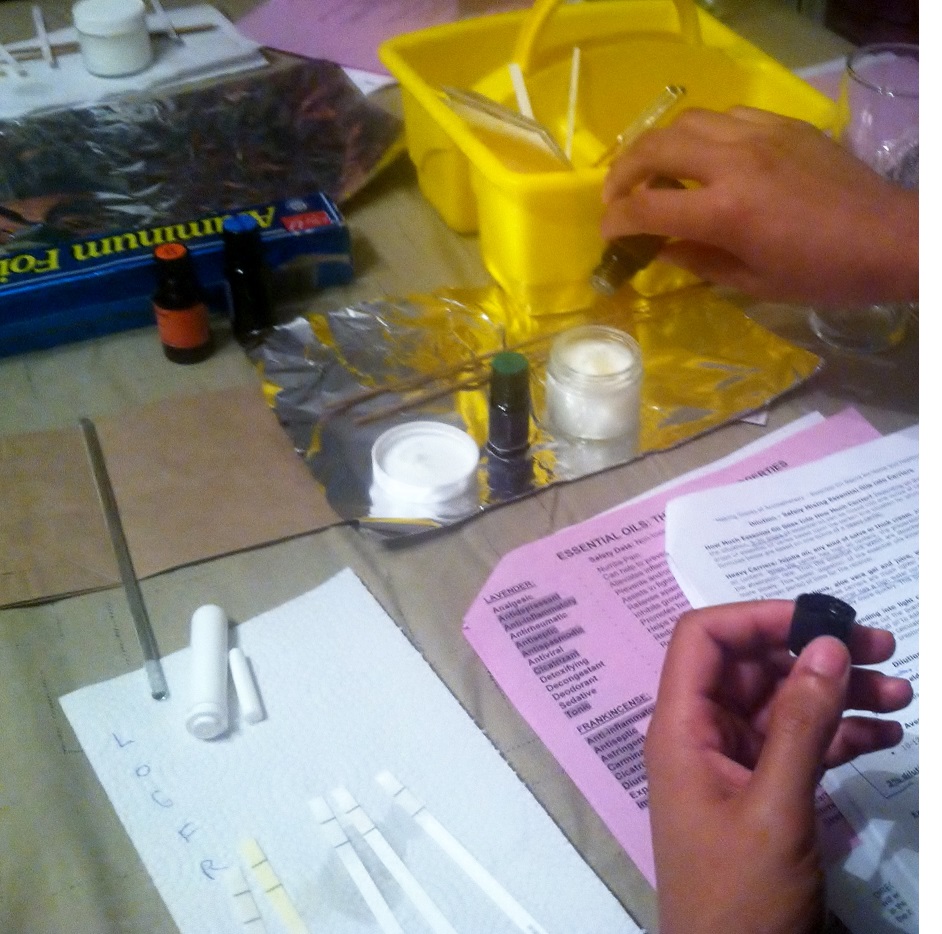 The use of essential oils to soothe body, mind and spirit is as old as our relationship with the plant kingdom. The origin of this ancient healing art cannot be attributed to a specific person, yet aromatic plant extracts are mentioned within traditional and folk medicine practices around the world. Though essential oils have been widely used for their therapeutic effects since ancient times, the term ‘aromatherapy’ emerged in the early 1900’s and is attributed to French chemist Rene-Maurice Gattefosse. He burned his hands while working in his laboratory and used lavender essential oil to quickly and successfully treat the wounds.
The use of essential oils to soothe body, mind and spirit is as old as our relationship with the plant kingdom. The origin of this ancient healing art cannot be attributed to a specific person, yet aromatic plant extracts are mentioned within traditional and folk medicine practices around the world. Though essential oils have been widely used for their therapeutic effects since ancient times, the term ‘aromatherapy’ emerged in the early 1900’s and is attributed to French chemist Rene-Maurice Gattefosse. He burned his hands while working in his laboratory and used lavender essential oil to quickly and successfully treat the wounds.
The role of essential oils in healing was also being observed a decade earlier within the flower growing districts of southern France in the late 1880’s. The workers processing the fragrant flowers and herbs of that region showed a remarkably low incidence of tuberculosis. This noteworthy resistance to respiratory illness caught the attention of French physicians and the anti-bacterial properties of essential oils became the subject of subsequent tests.
Essential Oils - Where do they originate?
The art and science of aromatherapy has grown impressively from these early roots. We now know that not every plant produces essential oil. Only 20% of medicinal herbs contain these highly concentrated aromatic extracts. Within that 20%, leaves, flowers, grasses, needles and twigs, fruit rind, wood and roots are among the spectrum of plant parts which can house essential oil.
Extraction
Steam distillation is the most common method of extraction and once harvested, the essential oil is approximately 70 times stronger than the original herb. The potency and variety of components within essential oils can pack a powerful healing punch on a number of different levels: They can be anti-bacterial, anti-viral, pain-relieving, anti-depressant, anti-spasmodic, sedative, calming, uplifting, stimulating and more.
It takes quite a lot of plant material to generate a small amount of essential oil. In addition, harvesting and distillation are labor-intensive. For instance, jasmine flowers are hand-picked an hour before dawn because the peak of the essential oil concentration occurs within the bloom at that time. So it’s easy to see why essential oils are often costly. Yet, it takes only a small amount of these powerful substances to produce a definitive effect. So a well-stored bottle of essential oil can be put to sparing, yet highly effective use for several years.
Organic Chemical Properties and Purity
The chemical profile of an essential oil can be documented through something called a GCMS (gas chromatography-mass spectrometry) report. The GCMS is a chemical analysis of the essential oil which measures individual components and the percentage of each component within the oil. The report produces details which allow the aromatherapist to assess what chemical family the essential oil belongs to and what therapeutic effects it will produce. The GCMS can also be an indicator of purity; whether the essential oil has been adulterated or 'cut' with other ingredients in order to increase quantity and manufacturer profits.
Though aromatherapy has a long history, it just now emerging as a science and is still largely an unregulated industry. The GCMS provides a method of assessing the quality of the essential oil and providing assurance of its viability for therapeutic use.
Application
Methods of application can be as easy and low-tech as inhaling straight from the bottle – a favorite for clearing sinus congestion, especially when the oil has decongestant properties. Another traditional method is topical application: essential oils are dissolved into a ‘carrier,’ such as unscented lotion, and then applied onto the body where the symptom is present.
Conclusion
Sound simple? Once you know the basics of safety and dilution, much of aromatherapy practice is delightfully uncomplicated and effective. So, if you find this article has sparked your interest in using essential oils for therapeutic effects, be sure to receive training before embarking on your fragrant healing journey!
Professional Profile
Hallie has been practicing massage therapy since 1996 and is licensed in Connecticut and New York. She is Board Certified in Therapeutic Massage and Bodywork, an approved continuing education provider for the National Certification Board for Therapeutic Massage and Bodywork, and has been offering continuing education classes since 2000. She became Nationally Certified in Holistic Aromatherapy in 2002 and has been studying advanced clinical aromatherapy since 2005. Hallie is also an Associate in Polarity Therapy (APP), Usui Reiki Master Teacher, Master Instructor of Integrated Energy Therapy and certified labyrinth facilitator. She spent 4 years teaching the massage curriculum for Cortiva Institute (formerly Connecticut Center for Massage Therapy) and 13 years as an instructor for Finger Lakes School of Massage in both Ithaca and Mt. Kisco, NY. Her decades of experience in massage therapy teaching and program administration now support and inform her professional consultancy work with colleges, universities, and private institutions that want to add therapeutic massage to their degree programs and educational offerings.
Hallie is founder of Soul Song, offering training in a wide spectrum of complementary care alternatives. A well known and respected educator with extensive training in energywork and body-centered therapies, her mission highlights creating transformation on personal and professional levels through quality education in alternative approaches to prevention and wellness.
To take a class in Holistic Aromatherapy, please visit the Continuing Education page of this website. To schedule an aromatherapy lecture or class in your area, email Hallie.
